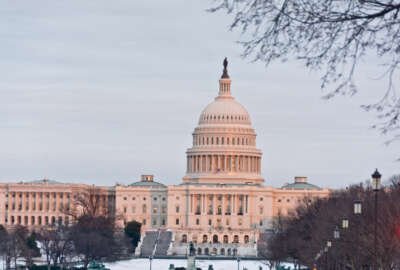With Democrats back in control of the House of Representatives, unions and groups representing workers, retirees, managers and executives are increasingly confident they can deliver a substantial raise to white collar feds next year.
Don’t spend it yet, but both the American Federation of Government Employees and the National Treasury Employees Union made a strong pitch yesterday on Capitol Hill for a minimum 3.6 percent pay raise. They testified before the House Appropriations Subcommittee on Financial Services and General Government. NTEU President Tony Reardon said data from the Federal Employee Comparability Act calls for a base 2.6 percent raise which would go to 3.6 percent when local pay raises were factored in. AFGE Policy Director Jacqueline Simon pointed out that the bipartisan Federal Employees Pay Comparability Act of 1990, cleared by a Democratic Congress and signed by a Republican president, has never been implemented as intended. Presidents Clinton, Bush and Obama consistently froze pay or gave feds smaller raises than called for by law.
President Donald Trump proposed freezing federal pay again this year but was rebuffed by Congress with some Republican support in the Senate, leading to a January 2019 surprise pay raise. Although most workers still haven’t received the retroactive portion of their new raise, mainly because of the 35-day partial government shutdown, it is coming.
The 2018 midterm elections vindicated the union’s solid support for Democrats. Most of the associations representing workers and retirees carefully walk the bipartisan path. Many of their leaders may lean Democratic but they generally chart a neutral course trying to win or protect pay and benefits for their members. So are they simply blindly partisan, or are they on to something?
Federal and postal unions are in the Democratic column and have been for years, with some notable and at times intentional differences. In 2016 while all the major federal and postal unions backed Hillary Clinton, the AFGE’s Border Patrol Council endorsed Trump. The presidents of the AFGE and the National Association of Letter Carriers endorsed — as private citizens and not union leaders — the re-electon bid of President Richard Nixon. The information was “leaked” to the media. Neither relationship lasted long.
Finally, the Professional Air Traffic Controllers Organization backed Ronald Reagan over Jimmy Carter. That ended badly when the controllers went out on strike. The organization no longer exists.
With notable exceptions, Republicans have been their own worst enemies when it comes to dealing with federal workers as voters and citizens. In the four decades the Democrats controlled Congress, many influential chairmen — and they were all men — managed to get federal installations and big military bases in their home states. These were heavily concentrated in southern states where voters understood and appreciated that tenure leads to top jobs on key committees. They in turn could manage using the lure of appropriations dollars to get a Navy presence in Memphis or a major federal-military presence in Oklahoma, even though the threat from the then-Soviet Union was from the Atlantic or Pacific oceans or over the North Pole.
But after the South trended Republican many local and national politicians seemed to take Uncle Sam’s presence, with all those people and their payroll and votes, for granted, or treat feds as a problem rather than an asset.
If the GOP politicians were wise they would celebrate and appreciate the value of a major federal or military installation and its people that are already in their backyard with the same appreciation and gratitude they exhibit even as they perform cart wheels and make tax deals in hopes of luring an Amazon or Boeing to their back yards.
Nearly Useless Factoid
By Amelia Brust
Most Broadway theater seating does not have a row “I” because the uppercase letter looks similar to the numeral 1 and can confuse both ticketholders and ushers looking for the right seats, especially in the dark. For a similar reason, many theaters also do not have rows “O” or “Q.”
Source: Playbill
Copyright
© 2024 Federal News Network. All rights reserved. This website is not intended for users located within the European Economic Area.
